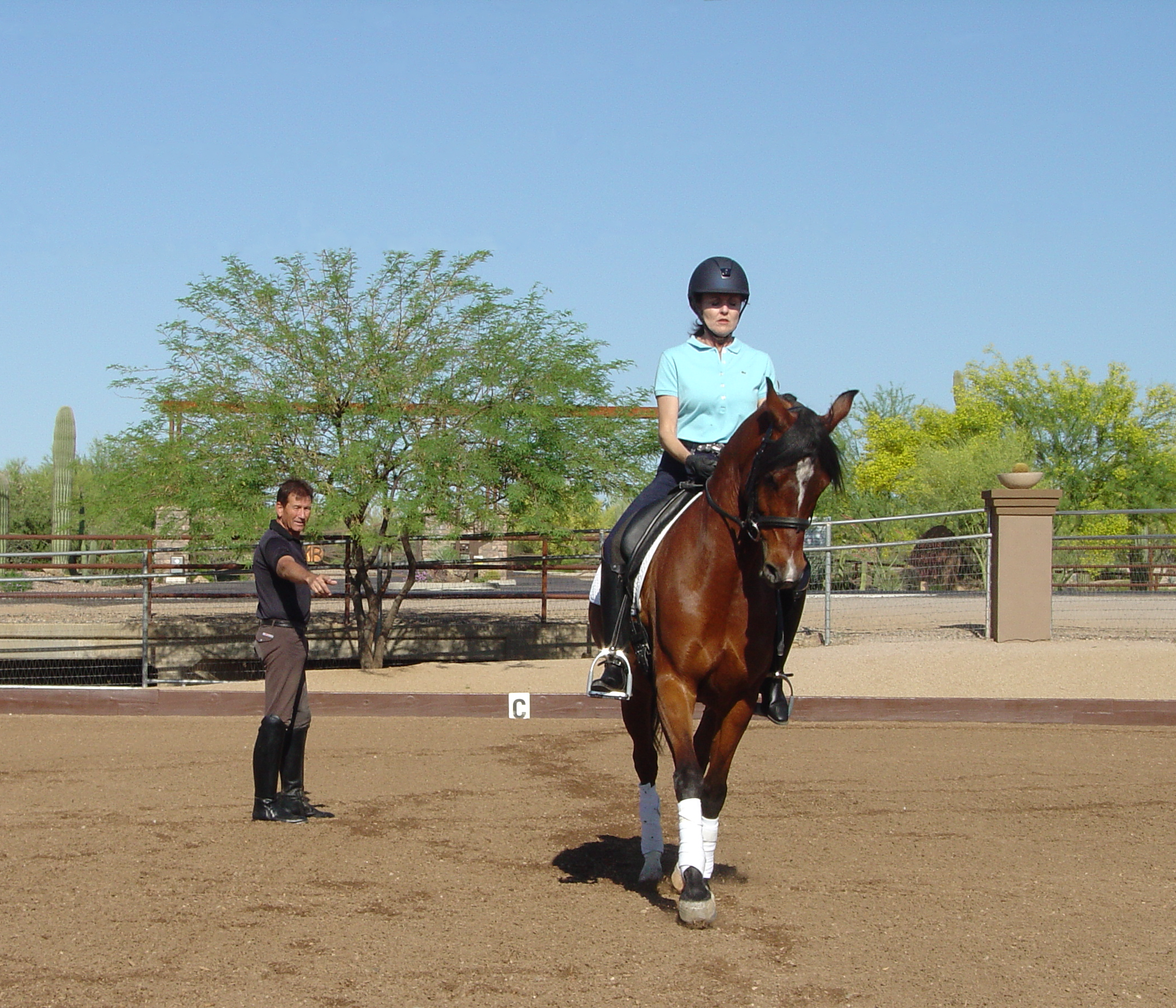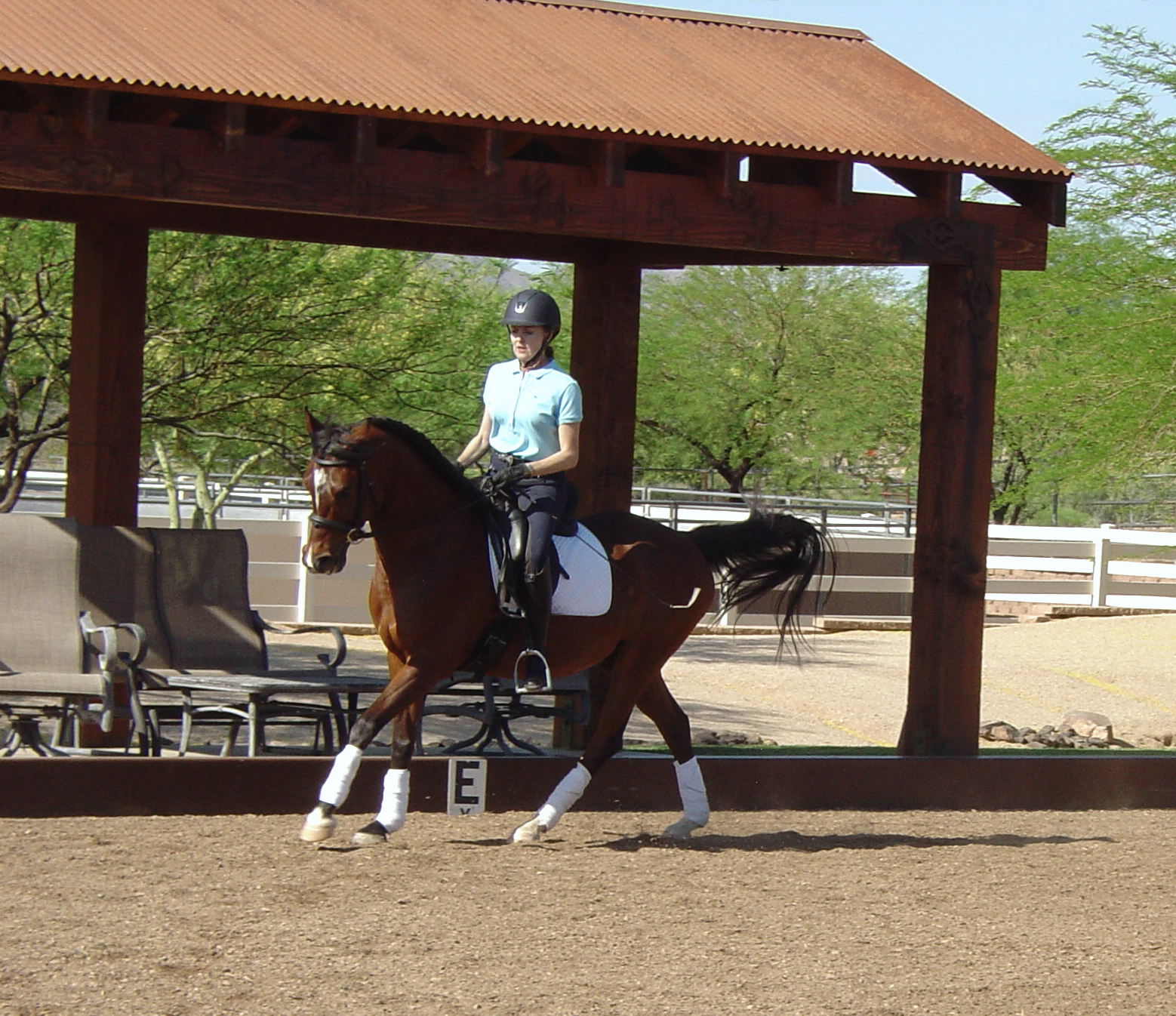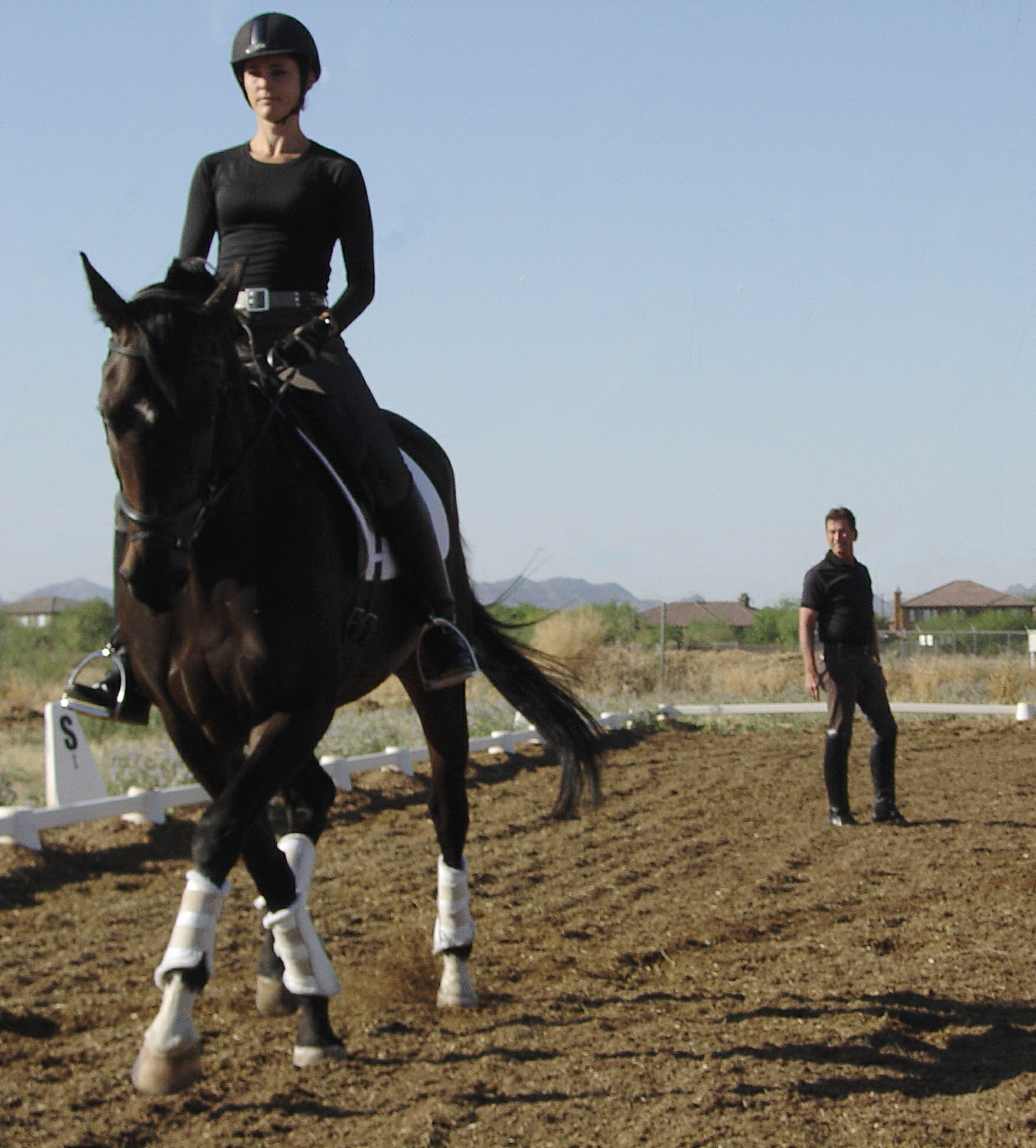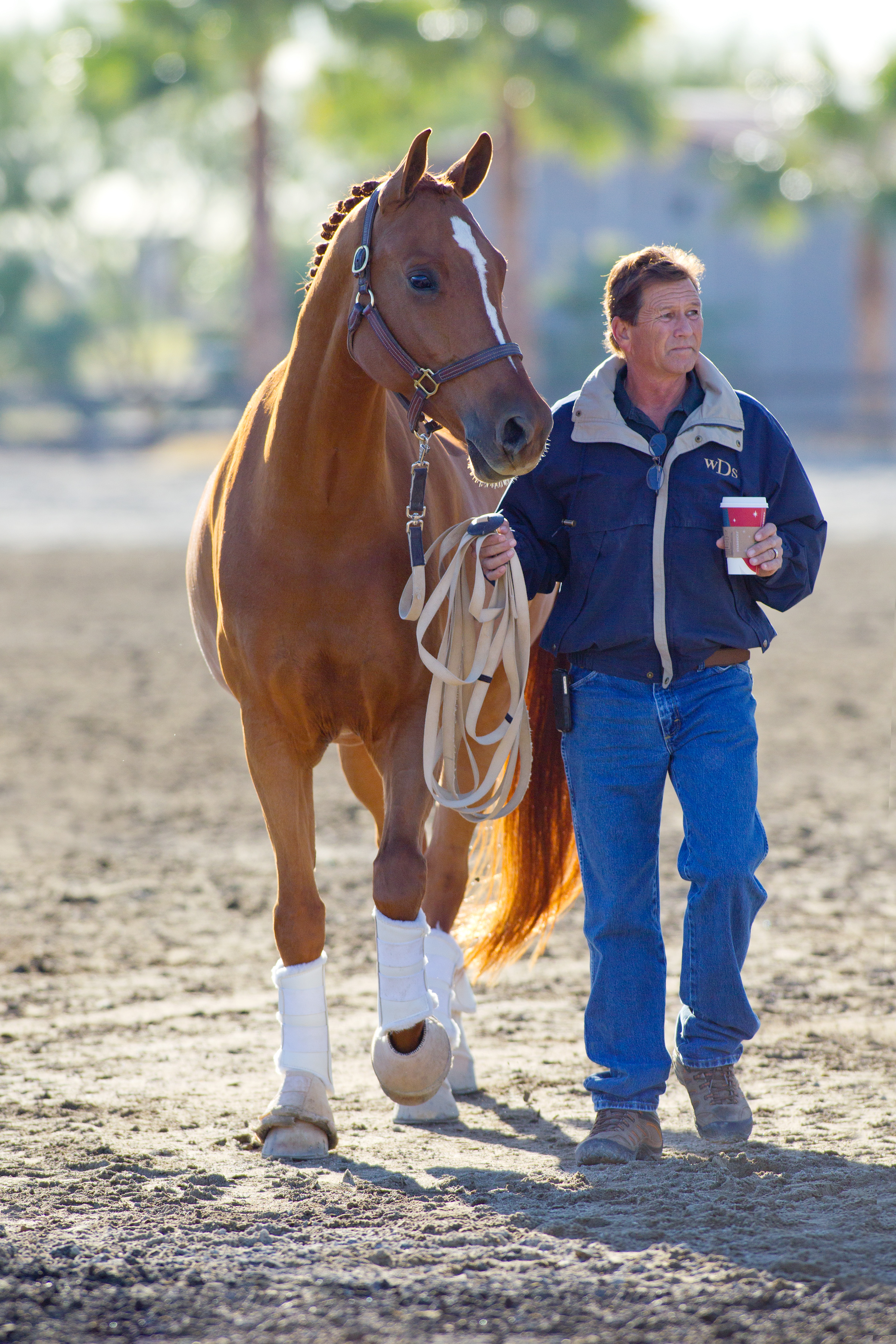One of the main desires of all professional dressage trainers is to have a barn full of students who are enthusiastic, inspired and so animated that they can’t wait to ride (or tell their best friend how much fun they are having with dressage). Dressage barns with this kind of vibrant atmosphere set the example for others to follow. A major part of creating this environment is the success of your lessons.

Oftentimes we don’t stop to really think about our instruction. We have a warm-up period, we start our next segment with a goal in mind and, while working toward that goal, we deal with the problems as they present themselves. After taking care of some of the ragged edges by aiding the client through the movements, we cool down and call it a wrap. The clients that make real progress in a lesson structure such as this are the more finished riders or those that have innate talent. What about the lower-level riders that really struggle to make significant progress?
Factors that prevent lower-level riders from making rapid progress are varied. Lacking the strength and balance for an independent seat and not being properly mounted are the two most common “deal breakers.” What are the other difficult issues that need to be addressed? Decision-making skills, timing and confidence are the next biggest culprits and are all interrelated. If you can consistently help your clients to overcome these hurdles, you will be a rock star in their eyes. The key to having consistent success with these issues lies within the structure of your lessons.
The system I have developed to address these issues is structured around the following four simple ideas:
1. Make your student aware of what the word “competence” means.
2. Develop words that truly motivate.
3. Assign numerical values to the aids to create context and a practical feel for effective aids and timing.
4. Each lesson, choose and continue to stress, the one thing that the horse needs in order to perform work that has quality and balance.
Skill 1: Focus on Competency
All students begin by wanting to become good riders and they take lessons to make that progression. Did you ever stop to think how vague an idea a “good” rider is? Most of the time, if you ask lower-level students what their goal is, they’ll say they want to have fun going to the shows or they may say that they would like to be able to ride like so and so. What they really want is to become competent and they have no idea what being a competent rider is like. By defining competency relative to performance-horse riding, you give your students a framework to establish perspective within as well as specific goals.
Ask 10 different people what makes a rider competent, and you will get 10 different answers. The concept is difficult to define, but I think that competent riders all have in common the following skill sets: the strength and balance to have an independent seat, correct form, the ability to read their horse, good decision-making skills, good timing and confidence. Becoming good at all of these components takes years of lessons. Progress is made, and at some point the ability to consistently walk, trot, canter and perform transitions in some differing forms of balanced collection becomes possible. At each milestone in progress, the student will have an epiphany of awareness and know that he or she has the skill to influence the behavior of his or her horse in a different and more advanced way. This is linear progression.
How much quicker could competency be achieved if these components were defined up front as an awareness, with each one becoming a goal to complete? Inviting your students to experience what being a competent rider is like takes place on different mental and physical levels. For example, while possibly not having a sense of confidence riding a horse, each rider is confident about some aspect of his or her daily life such as work, abilities in other sports, being good at other hobbies or even having good study habits. For example, let’s say that your client is good at schoolwork. Ask questions such as: What is it like to be confident when you are studying for a test? How does your body feel when you are confident? How much easier is it to make decisions? How different do you feel when you ride? How would riding be if your body and mind felt like they do when you are studying for a test? These questions will help your student realize that there are differences when he or she is confident and help him or her access and use those feelings.
When your students progress during a lesson and ride some strides with obvious newfound confidence, a great question to ask at that moment is, “How different is this than what you used to do?” (Putting less-efficient riding habits in the past helps them to realize they? have just made a major transition). Let your student answer how different she felt and what that feeling enabled her to do. Follow with the question, “Can you imagine how being like that will help you do x (“x” being the next related movement that has been problematic)? In this way, you guide your student to take the actual mental and physical experience of what was felt and accomplished and transfer those confident thoughts and feelings into the future by imagining a better outcome to a recent problem.
Good decision-making, reading the horse and good timing can all be explored in much the same way. By providing context, your students will develop a sense of competency much faster than being unfocused.

Skill 2: Use Words that Motivate
Selecting the right words during your lesson is important. Words focus thoughts, thoughts generate actions, and actions are what produce results. I like to keep lessons simple and lighthearted. To this end, I will always use simple terms and watch my student’s face as I communicate in order to determine if she understood what I said. In some instances I will still get a deer-caught-in-headlights look that lets me know that we are not on the same page. It is essential, if you expect to make real progress in one lesson, that the information you communicated was understood in the way you intended it, and that you are absolutely certain that your student got it. If you are not certain, it is easy to say, “I don’t know if you really understood what I just said. Could you tell me, in your own words, what that means to you?” When she responds, she will use words that are important to her, not necessarily the words that you said. Notice the words that are different, particularly the action words. If some are in sync toward motivating your student to ride in the manner that you intend, use them when you continue with your lesson. These are your student’s words. Your student’s past experiences are what give these words personal meaning and she owns them. Using them will resonate with your student and give you more power to motivate her to act.
If some words used don’t accurately reflect the situation, call this to your student’s attention. Let your student know that she trains/rides the way she thinks. If her results aren’t what she wants, giving her more exercises or more movements to do won’t necessarily help her until you change the way she thinks about how those exercises and movements in horses happen. What, specifically, motivates your horse to do something? The answer is always the use or removal of pressure somewhere. I say constantly, “The meaning of your cue is the response that you get.” It is not what you thought you were supposed to get. It is what the horse actually did after the use of your aid. If there is no response, your aid was meaningless. Regardless of what the response was, the horse just demonstrated to you what it meant to him. For the student who has not been achieving what she wanted, what she needs to know is that she has been achieving what she asked for. If she wants to progress, she will have to change what she is doing. Using useful, instructive words in speaking—and in thinking—will help your student to be more accurate in her movements.
If your student’s words are too vague or lack the power to motivate her to produce the result that you want, talk to her about replacing those words. When you introduce and explain words that you would like to use, understand that these are your words and have a special meaning only to you. For your student to feel the same way about the word, you might have to tell a short story around the word that fully imparts the meaning that you want it to have. It’s your word, it motivates you to ride in a certain manner; tell your student why. After the story, if you still sense that your word carries little energy with her, ask her to think of a similar word that has the same meaning to her. Keep going until you find the right word. At moments like these you aren’t training the horse, but you are certainly educating your student to think differently. These moments can be the difference that makes the difference between average results to good results and from good results to excellent ones.
As an instructor, it is up to you to keep changing the words that you use to find the accurate ones that resonate with your student and motivate her to ride in an effective manner.

Skill 3: Use a Numerical Scale
We have all given lessons in which we say, “Use a little more leg/hand, goooood. Now you need a little bit more, gooood.” While language such as that helps most riders to achieve results moment by moment, it is usually not well-enough defined to enable the rider to make her own quality decisions in the future (let alone the rest of the lesson). Instead of being vague, an easy solution is to assign numerical values to the strength of the aids. This helps in two distinctly important ways. First, the number provides context that helps a student understand where she is within the process of producing a quality response from her horse. The student who constantly uses a “2” for leg, and can’t produce quality forward movement will be amazed when you convince her to try out an actual “6.” Second, using numbers assigned to rein aids and leg aids, the instructor can enable the student to more exactly understand the nature of timing. You can give your student a feeling of what it might be like to be you, using your touch and timing to achieve a rapid result. The resulting clarity can vastly speed up your student’s learning curve.
Let me give you an example of using this system. Let’s use a student who has a problem making a quality 20-meter circle. The first step is to ask the student, while she is in her version of a 20-meter circle, to approximate from 1 to 10 how much, and the range of energy (the energy in the same hand, for example, may change from stride to stride) she is using with each hand and each leg. Have your student reverse and do the same approximations so that you can established baseline values for a 20-meter circle.
Do the same approximations in a straight line so you establish values going straight. (You will probably notice some disconnects between the two.) Next, tell her to ride the same circle and let her know that you will tell her how strong or light she needs to be with each aid and when. Tell your student that you will change the circle into an octagon and each turn will become distinct with subsequent trot strides being straight until the next turn. Have your student start and at a point, take over the ride with your approximations as to energy and timing between leg to hand. The first try may be sloppy, but in a time or two, you both will see a big improvement. As you practice this with each student, you will become more adept and will probably invent a few new rules for the student to follow to become consistent.
The value of this system in helping your students change the way they think about riding cannot be underestimated. As an example, for the rider who consistently carries too much tension in one or both hands and self-assigns the number 2, tell her that the real value is probably a 4 or 5 and have her discover what a 2 is really like. In these moments you will become amazed at the improvements that rapidly happen once a solid framework is established instead of constant guesswork. For the rider who struggles with a quality working trot or medium walk or quality anything, you will have an adaptable way to develop a lesson plan that generates solid results. Once this system has been established, the final step of this lesson structure comes into play.

Skill 4: Pick the “One Thing”
Each lesson, consider what you would like to teach and contrast that with the work that you are actually seeing the horse do as he finishes the warm up. I ask myself at the start of every lesson the same question: What are you seeing? This focuses my eye toward noticing exactly what the rider is doing and exactly how the horse is responding. Regardless of what your original intention was, start your lesson with the most basic component that the horse lacks and needs to progress toward balanced, quality work that day.
Lessons go wrong when balance is lost and the situation is not immediately addressed. Balance is the key that enables a horse-and-rider team to consistently and easily reproduce quality work and have rideability. A horse has rideability when the normal responses and movements for the level that the horse is working at are easy every day. When balance is lost, everything becomes much more difficult because each subsequent request for movement on an unbalanced horse usually generates from the horse another unbalanced answer. This cycle perpetuates until it could be said that the horse “isn’t doing one thing right” (has lost balance and is unmotivated to produce any complete response). As an instructor, you know this has happened when everything the horse does is flat and there is no quality to the work. It is at this point that the lesson needs to focus on “the one thing.”
Recognizing the one thing is usually not that difficult if the overall framework of the lesson is balance, working toward self-carriage. As balance has been lost, determine how it happened. Is the horse on the forehand? Ninety-nine percent of the time this is true. Is the horse on the forehand because he is behind the leg? Or is the horse taking your rider for a ride ahead of and not waiting for the rider? Is the horse not going forward well enough to be on the bit and balanced with a little throughness? Once these questions have been applied to the situation, the answer is usually obvious.
The next step, which is the most important part, is to pick an exercise or movement pattern that separates and addresses specifically, and only, the one most basic aid that is the first to fail in the production of balance. When the problem involves only one aid that is failing, it is solvable. Trying to solve two problems at once doesn’t work. When lessons fail, 99 percent of the time it is because more than one problem was combined within the movement.
When the aid becomes productive and the horse finally performs the one thing in a complete and compliant manner, there is a cascade of effects that occurs because of the focus that has been created. Suddenly there is an awareness within the rider of what “right” feels like and that it is achievable. Subsequent repetition with a rider who is more confident, with reality-driven expectations, and a horse that has a newfound respect and motivation will produce tremendous advances. The last tidbit of advice: When real progress is made, quit the lesson before the horse quits your rider. Let those good feelings of success go unsullied without having the next request end with a “no” for an answer from a tired horse.
While this simple lesson structure may take a few sessions to fully implement, taking the time to do so will produce a more thoroughly engaged student who is acutely aware that each lesson has been personalized to her. Separately, each component of this lesson structure has the ability to rescue a lesson heading for an incomplete and unfinished outcome and the accompanying feelings of frustration and inadequacy. By changing the way you relate to your student, and by changing the way your student thinks about horsemanship, your effectiveness as an instructor can become heroic.
This article appeared in the September 2013 issue of Dressage Today.

Ray LaCroix won his first U.S. National Arabian Championship at age 16. At 27, he became head of the training division at Lasma Arabians. In the mid-1990s, he became aware of a system of accelerated learning used by sports psychologists in a wide range of disciplines. He dedicated two years to taking advanced communications courses in Neuro-Linguistic Programming, which helped him further refine his teaching approach for horse and rider teams. In 1998 he retired from the show ring, became an equine training consultant and formed Accel Training Systems, Inc. through which he has given numerous seminars in the United States, Canada and South America and has expanded his skill set to include all breeds of horses. Within the last five years, he has transitioned to dressage, and is absolutely addicted to the structure, detail and level of horsemanship required to successfully compete.











